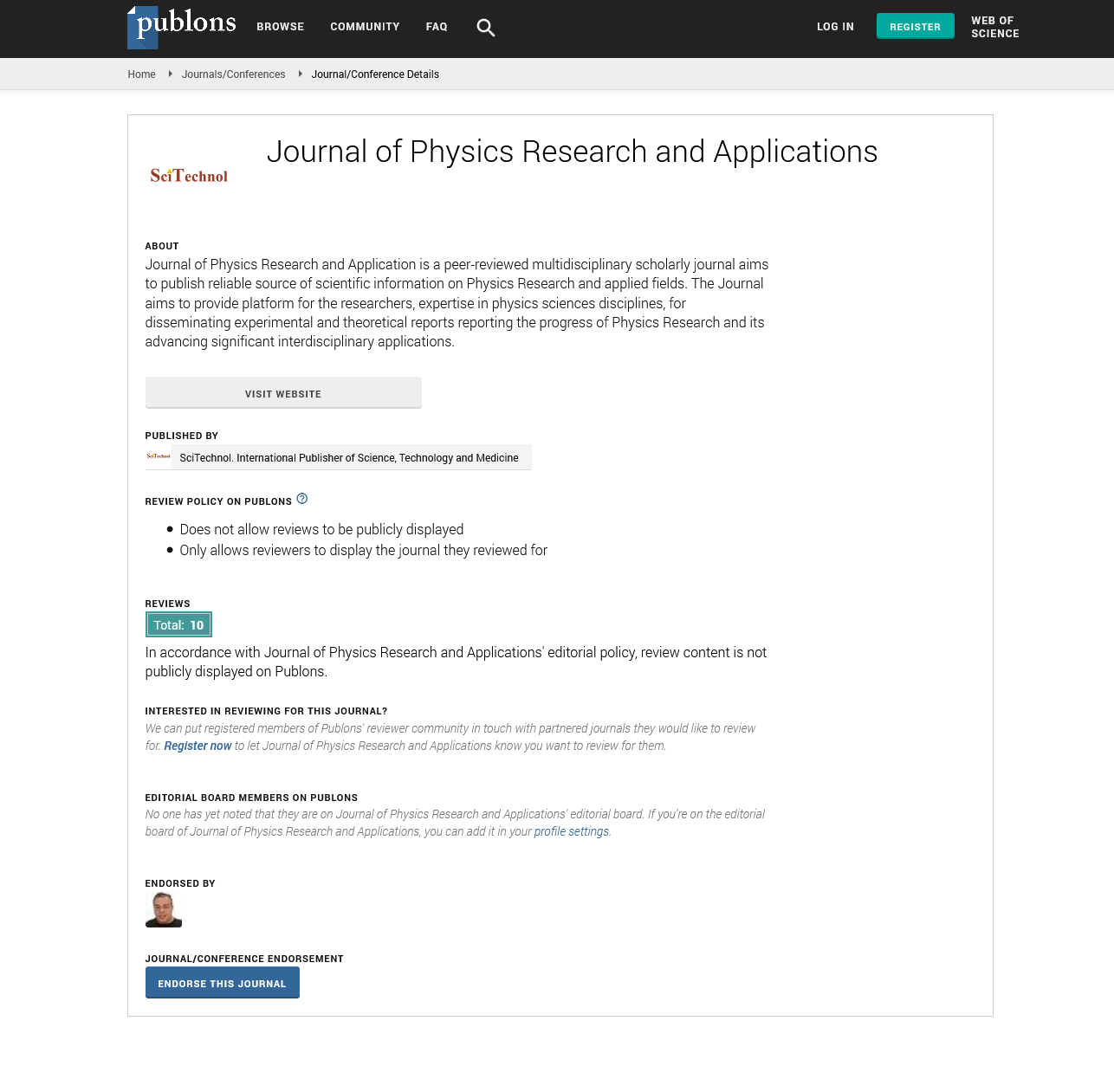Anisotropic crystal growth, optical absorption, and ground state energy level of CdSe quantum dots adsorbed on the (001) and (102) surfaces of anatase-TiO2
Taro Toyoda, Qing Shen, Keita Kamiyama, Hisayoshi Kobayashi, Yasushi Hirose and Shuzi Hayase
The University of Electro-Communications, Japan
Bunkoukeiki Co., Ltd., Japan
Kyoto Institute of Technology, Japan
The University of Tokyo, Japan
Kyushu Institute of Technology, Japan
: J Phys Res Appl
Abstract
Owing to the size-dependent quantum confinement effect, semiconductor quantum dots (QDs) have a tunable energy gap and higher extinction coefficients, indicating the possibility of using them as promising sensitizers for sensitized solar cells. Although QDs have such promising properties, the photovoltaic conversion efficiencies of QD-sensitized solar cells (QDSCs) are still lower than those of dye-sensitized solar cells. Usually, TiO2 Nano particulate electrodes play a key role in applications to QDSCs, because of a large surface area with a large amount of QD adsorption for light harvesting. In that case, heterogeneity can be appeared which disturb a detailed understanding of the fundamental factors of QDs adsorbed on TiO2 Nano particulate electrodes. The present study focuses on the effect of TiO2 surfaces with different crystal orientations on optical absorption and ground state energy level in systems comprising CdSe QDs adsorbed on (001) and (102) surfaces of anatase-TiO2 (A-TiO2) to get the information for QDSCs. We applied photoacoustic (PA) spectroscopy based on photo thermal phenomenon to characterize the optical absorption, not only in the bandgap absorption but in the sub bandgap region. Photoelectron yield (PY) spectroscopy is useful for determining the absolute ground state energy level of QDs. Adsorption time dependence of optical absorption shows that (1) the adsorption rate of CdSe QDs on A-TiO2(001) is higher than that of A-TiO2(102) in agreement with our DFT calculations ((001) >> (100 ) > (102)), and (2) the diameter increasing rate of CdSe QDs on A-TiO2(102) is higher than on A-TiO2(001), indicating the anisotropic crystal growth. The ground state energy levels of CdSe QDs on A-TiO2(102) are lower than those on A-TiO2(001), suggesting the impossibility of the sensitization from the excited state of CdSe QDs to the conduction band of A-TiO2(102). Lower value of the ground state energy level of CdSe QDs on A-TiO2(102) (negative polarization) is possibly due to the difference of the permittivity of A-TiO2(001) and A-TiO2(102).
Biography
Taro Toyoda has completed his DSc from Tokyo Metropolitan University and Assistant Research Officer at National Research Council of Canada. After working at Fuji Electric Company and Nippon Mining Company, he was appointed as a Professor at The University of Electro-Communications. His research focuses on basic studies of optical properties in semiconductor quantum dots including photo excited carrier dynamics and their applications to photovoltaic quantum dot solar cells. He has published more than 200 papers in reputed journals.
E-mail: toyoda@pc.uec.ac.jp
 Spanish
Spanish  Chinese
Chinese  Russian
Russian  German
German  French
French  Japanese
Japanese  Portuguese
Portuguese  Hindi
Hindi 
